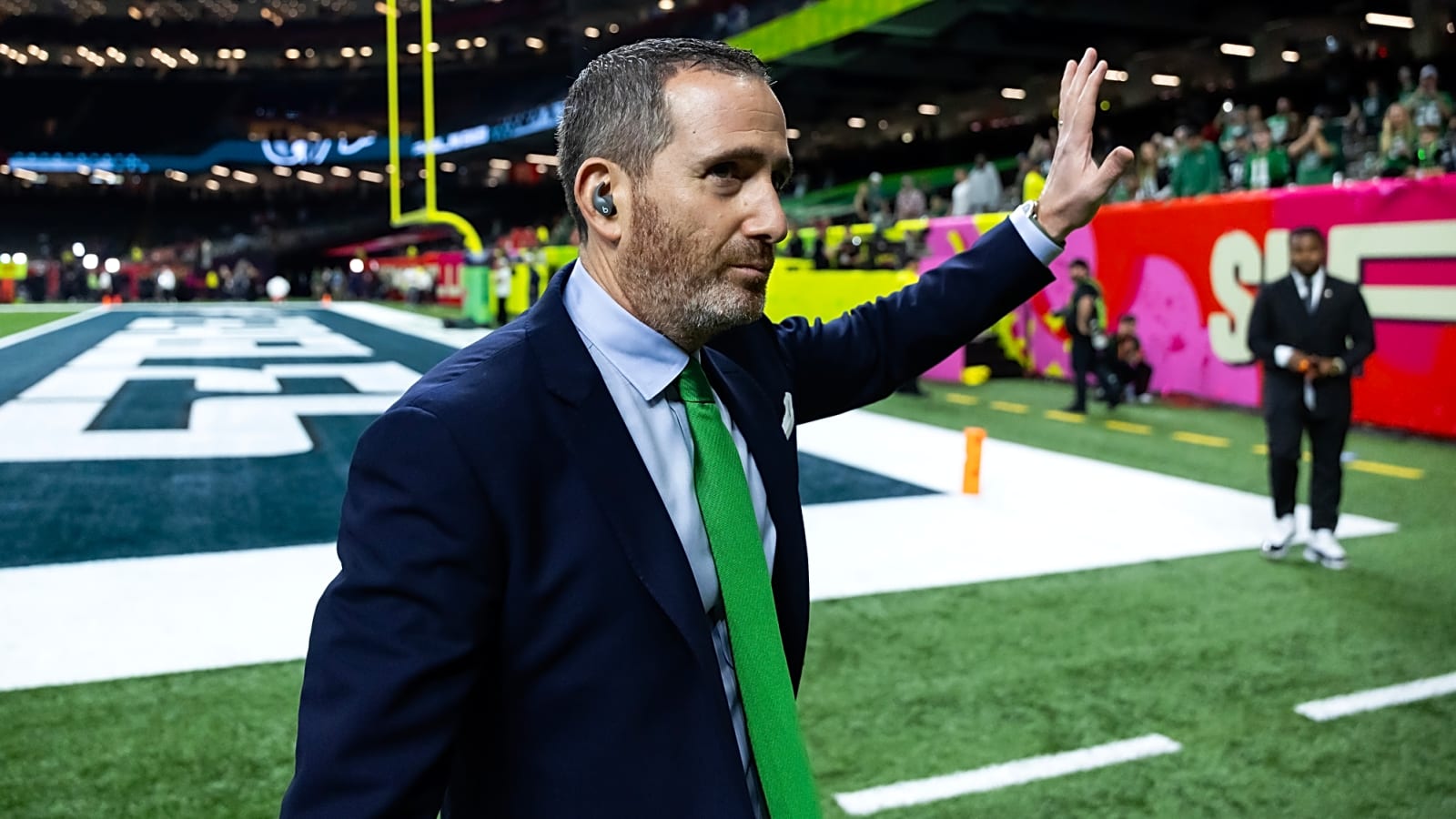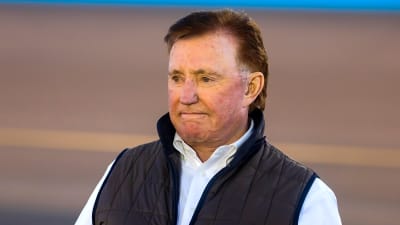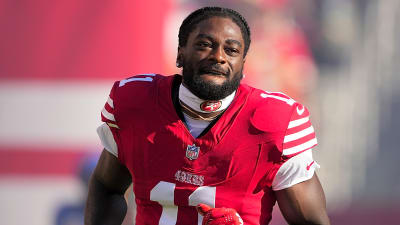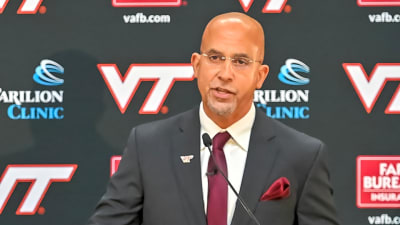
Training camps are in full padded swing now, and the Hall of Fame game is tomorrow. Before we fully dive into the preseason, let’s take a crack at ranking all 32 NFL GMs.
To formulate this list, I focused on three criteria. First, on-field success. How good has the team been under this GM’s watch? Have they won a Super Bowl? Is their success consistent, or a few great years scattered among mediocre ones?
Second, I looked at draft history and roster construction. Have they consistently drafted better than average? Are they hitting on their premium picks, and also finding value in the later rounds? Do they make contract mistakes too often, or seem to have a weakness they just can’t shake? Lastly, I considered how well-respected they are in the industry. Do their peers speak highly of them? Are extensions regularly made without issue, or do contract disputes drag out and cause complications? That sort of thing.
The four new GMs this season all rank near the bottom, but that could change quickly. This is a fickle industry, and it doesn’t take long to shake things up. One good year and you could find yourself rocketing past colleagues who are now on the hot seat. Let’s dive right into the rankings:
1: Brett Veach, Kansas City Chiefs
He doesn’t grab as many headlines as the man directly below him on this list, but there isn’t a savvier GM in the league than Veach. An internal hire in 2017, he orchestrated the trade up for QB Patrick Mahomes, a move that has already delivered three Super Bowls to his city. The high-profile stardom of players like Mahomes and TE Travis Kelce, as well as the success of HC Andy Reid, means that many of Veach’s best moves fly under the radar. He’s one of the top drafters in the league, with a consistent influx of plus contributors on rookie contracts that allow the Chiefs to keep a healthy, young, cheaper roster around their expensive stars.
2: Howie Roseman, Philadelphia Eagles
“How does he keep getting away with this?” is the common refrain after seemingly every draft Roseman conducts. He manages to walk away with steals in every round of the draft, pouncing on players others passed up, and they usually work out. With one of the strongest and most sustainable rosters in the NFL, Roseman is a master of solving problems before they develop, drafting replacements at key positions to take over when players retire or depart in free agency. He’s not afraid to replace good players with better ones, nor to provide insurance plans, such as drafting QB Jalen Hurts with QB Carson Wentz seemingly still in his prime.
3: Les Snead, Los Angeles Rams
Perhaps the most underrated GM in the league, Snead isn’t often mentioned as one of the elites, but he’s managed to execute multiple different strategies in quick succession to keep a narrow contention window open longer. Most famous for his “F*** Them Picks” strategy that made it onto a t-shirt at one point, Snead built a strong roster that reached a Super Bowl in 2019 before trading for QB Matthew Stafford and selling out to win one in 2022. Since then, Snead has masterfully overseen a remarkably fast reload, suffering one down year before making the playoffs each of the last two seasons. This new roster is built upon loads of later-round picks, alongside a few top assets, that have turned the Rams into one of the very best young rosters in the NFL.
4: Jason Licht, Tampa Bay Buccaneers
Four through nine are about even, but I’ll give the edge to Licht, a Super Bowl winner who’s brought Tampa Bay back from bottom-dweller status to a perennial contender. His tenure started slowly in 2014, as 2015 No. 1 pick QB Jameis Winston didn’t pan out, but winning the Tom Brady sweepstakes in 2020 changed his fortunes. The Bucs won a Super Bowl that year with Brady, and Licht surrounded him with the necessary talent to get the job done. More impressively, Licht navigated a post-Brady world masterfully, executing a seamless transition to Baker Mayfield under center. The team currently has a stranglehold on the NFC South.
5: Brian Gutekunst, Green Bay Packers
A longtime Packers staffer going all the way back to 1999, Gutekunst was promoted to GM in 2018 and oversaw the team’s transition from veteran contender to young with potential. He traded up for QB Jordan Love in 2020, a move widely panned at the time, though Love has since looked the part. One of the league’s youngest rosters, the Packers are chock full of talent, and they’ve gotten better every year over the last several. If there’s one criticism of Gutekunst, it’s that he didn’t do enough to push the team over the top when Aaron Rodgers won back-to-back MVPs.
6: Brandon Beane, Buffalo Bills
A packaged hire with HC Sean McDermott in 2017, the duo revitalized the Bills organization and brought a level of success Buffalo hadn’t seen since the Jim Kelly days in the 90s. Selecting QB Josh Allen in 2018 was a risk, as Allen was a major project, but that investment paid off. By 2020, Allen became one of the best quarterbacks in the league and won his first MVP award just last season. Beane engineered a youth movement over the past two offseasons, transitioning from the first iteration of this title contender to build a new version with younger players. The Bills haven’t yet reached a Super Bowl under Beane, but they remain in the mix every year.
7: Eric DeCosta, Baltimore Ravens
Much like Beane, DeCosta hasn’t reached the mountaintop yet, but that shouldn’t take away from the rosters he’s built. Longtime Ravens GM Ozzie Newsome retired in 2019 and DeCosta replaced him, taking the gift of QB Lamar Jackson and building a contender around him. Focusing on the trenches and the secondary, Baltimore has a sustainable roster with plenty of young talent. They’ve been knocking on the door of a Super Bowl appearance for a while, and while nothing is guaranteed, it feels inevitable.
8: Brad Holmes, Detroit Lions
There might not be a better example of a textbook rebuild in the modern NFL than what Holmes did with the Detroit roster in just a few short years. Hired alongside HC Dan Campbell in 2021, Holmes set about turning over the roster and did so convincingly. By 2023, he’d built the Lions into a real contender, and they claimed the NFC’s No. 1 seed in 2024. Holmes built this team primarily through the draft, executing smart trades to gain assets and hitting on most of their top ones, alongside some mid-round gems like WR Amon-Ra St. Brown.
9: John Lynch, San Francisco 49ers
Lynch’s stock has dropped a bit in recent years, but he’s still one of the top GMs in the business. Hired in 2017 after some time as a studio analyst, he revamped the 49ers’ roster in short order. Alongside HC Kyle Shanahan, he turned San Francisco into the most consistent NFC powerhouse in the last decade, reaching two Super Bowls and two more NFC championship games in that span. Finding gold in QB Brock Purdy in the seventh round in 2022 saved Lynch from a bad trade up to draft Trey Lance at No. 3, though subpar drafting in recent years means this roster is thinner than it’s been in some time.
10: Kwesi Adofo-Mensah, Minnesota Vikings
A superstar riser in the GM world, if there is such a thing, Adofo-Mensah came over from the Browns in 2022 and transformed the Vikings organization. Perhaps the most analytically-minded GM in the league, he’s always wheeling and dealing on draft night, shaking things up as he chases value. He’s pulled off high-profile trades within his own division and hired Kevin O’Connell as head coach, one of the best young coaches in the league. How second-year QB J.J. McCarthy looks in his first year as the starter after missing his rookie season with a knee injury will say a lot about the future of this version of the team.
11: John Schneider, Seattle Seahawks
One of the orchestrators of the Seahawks’ run of dominance in the early 2010s, Schneider paired with HC Pete Carroll to create a powerhouse in the NFC West. The 2012 draft that brought in QB Russell Wilson and LB Bobby Wagner built a strong core. The Seahawks never quite recaptured the magic of those early Wilson teams, but Schneider pulled off a coup when he traded Wilson to the Broncos in 2022, building another playoff contender around QB Geno Smith for a few years. He reshaped the roster substantially this offseason, and the future direction of the team is a bit unclear.
12: Chris Ballard, Indianapolis Colts
Your favorite GM’s favorite GM, Ballard’s reputation is in danger of outperforming his results. Widely respected as one of the very best scouting minds in the industry, he has drafting down to a science. Ballard routinely hits on his top picks and trades down to find value in the middle rounds. Still, since being hired in 2017, the Colts haven’t won the AFC South and have just one playoff win, a major blight on Ballard’s record. Part of that is due to a rough quarterback situation that isn’t entirely his fault, though he’s failed to fix it at the same time. If third-year QB Anthony Richardson takes a leap this year, it would immediately paint Ballard in a more positive light.
13: Nick Caserio, Houston Texans
Brought over from the New England brain trust after years of being the Director of Player Personnel there, Caserio took his time with the Texans’ rebuild. He was forced to wait a year while star QB Deshaun Watson faced legal trouble — biding his time with a slew of cheap veterans — before trading him to the Browns for a massive haul, jumpstarting Houston’s resurgence. QB C.J. Stroud, drafted No. 2 overall in 2023, won Offensive Rookie of the Year and a playoff game, though he took a bit of a step back in 2024. Houston’s offensive line is shaky, but Stroud is one of the better young passers in the league, and their defense is nasty. Caserio has positioned the Texans to be a force in the AFC for years to come.
14: Monti Ossenfort, Arizona Cardinals
In just two years, Ossenfort has proven himself one of the shrewdest GMs in the game. Hired in 2023, he’s made deft trades and smart draft choices year over year, radically improving Arizona’s roster in a short amount of time. This year is the big test, as the Cardinals finally look competitive in a strong division and a loaded NFC. Ossenfort took a truly barren roster and retooled it in short order, maximizing the value he gets at every turn.
15: Andrew Berry, Cleveland Browns
Hired in 2020, Berry has had to work around the albatross of the Watson trade for most of his tenure. That was an ownership-driven decision that has handicapped the team since it was made, but Berry has done a solid job of building a roster despite his limitations. This team made the playoffs in 2023 with the ghost of Joe Flacco under center, and this defense is the real deal. Now that the Watson contract is approaching its end, Berry can begin turning his attention towards rebuilding the roster, starting with the two rookie quarterbacks he drafted this year.
16: Adam Peters, Washington Commanders
It’s early, but Peters could find himself steadily climbing up this list over the next few years. Hired in 2024 from an assistant GM position in San Francisco, he was paired with HC Dan Quinn to usher in a new era with new ownership. Peters immediately went about reshaping the roster, bringing in some bargain veterans and drafting QB Jayden Daniels at No. 2 overall. Daniels looks like a star and the team made the NFC Championship Game in his first season, but there’s still work to do on this roster before they’re true contenders.
17: Ryan Poles, Chicago Bears
Hired away from the Chiefs’ front office in 2022, Poles doesn’t have a perfect track record, but he’s been light-years better than previous Chicago executives. In just three years, Poles took a team with little hope for the future into a promising playoff contender, reshaping entire position groups in single offseasons to improve the team. Trading the No. 1 pick in 2023 proved to be a tone-setter for the Bears, as it landed them WR D.J. Moore, QB Caleb Williams, and much more. Now it’s up to Williams, the No. 1 pick in 2024, to take a step as a sophomore with improved infrastructure around him.
18: Omar Khan, Pittsburgh Steelers
Much like some other names on this list, Khan has built a strong roster, but his inability to solve the quarterback position weighs the team down. He was promoted to GM in 2022, though he’s been with the organization since 2001 and had a hand in the Steelers’ run of success with QB Ben Roethlisberger. Part of it is Pittsburgh HC Mike Tomlin’s ability to create .500 teams out of nothing, but Khan has kept the Steelers competitive, especially on defense. Now with Rodgers under center on his farewell tour, Khan will face yet another offseason of quarterback questions in 2026.
19: Jerry Jones, Dallas Cowboys
Jones is difficult to rank on this list. His status as team owner as well as serving as the self-appointed GM muddies the waters between his official duties and his off-the-cuff moments. He deserves some credit, as he won several Super Bowls back in the 90s early in his tenure. More recently, he (and VP of player personnel Will McClay) built the Cowboys into a regular playoff team with a stable crop of stars anchoring his roster and good draft success. Still, his team hasn’t been relevant often in the last 30 years and his hotheaded nature leads to complications, such as his comments this offseason threatening a key extension with ED Micah Parsons.
20: Mickey Loomis, New Orleans Saints
Loomis is an institution. He’s been around since 2002, signing Drew Brees and building the team that won a Super Bowl in 2009. Since then, though, it’s been a mixed bag. The Saints failed to surround Brees with a title-worthy team again until the twilight years of his career, and since Brees retired in 2021, Loomis has put on a clinic in how not to operate a rebuild. Cap magic and pushing money into future years allowed them to keep a contention window open with Brees, but Loomis has employed the same strategy for a team far from even playoff-caliber since then. This has hamstrung the team’s flexibility and kept them mired in mediocrity. That said, he’s had some great draft hauls over the years. The Saints’ 2017 draft is one of the best in history.
21: George Paton, Denver Broncos
What a turnaround for Paton. He has arguably the second-worst trade in NFL history on his resume with the Russell Wilson deal, and the hiring of HC Nathaniel Hackett aged poorly as can be, too. Since then, though, he’s built the Broncos into what looks to be a sustainable force in the AFC. It helps the team traded for HC Sean Payton from New Orleans, and Payton has a not insignificant level of roster control. But it can’t be denied that the Broncos are better now than they’ve been since they won the Super Bowl with Peyton Manning in 2015.
22: Dan Morgan, Carolina Panthers
A year into Morgan’s tenure, and the entire outlook for the Panthers has shifted. An internal hire a year ago, Morgan’s promotion was seen as risky given the abject failures of the previous administration. The opposite has played out so far. Carolina’s roster looks much better in just two offseasons, with real talent on offense now. Panthers QB Bryce Young, the 2023 No. 1 overall pick, looked like a bust of epic proportions early on in his second season before a very strong close to the 2024 campaign. If Young builds on that success, Morgan will be well on his way to revitalizing a dormant franchise.
23: Joe Hortiz, Los Angeles Chargers
Hortiz’s first year as GM of the Chargers was a resounding success. A longtime Ravens executive, he came over to join HC Jim Harbaugh and run the Chargers organization. The team made the playoffs in his first year, and he’s done a solid job so far of moving off expensive, underperforming veterans and adding talent through the draft. Harbaugh seems to have the final say on roster decisions, but Hortiz’s scouting background and roster-building acumen is certainly important.
24: Eliot Wolf, New England Patriots
Wolf’s official title is Executive Vice President of Player Personnel, though he serves as the Patriots’ de facto GM. Formerly with the Packers, he joined New England in 2020 and took his current position upon former HC Bill Belichick’s retirement. The job he’s undertaken in New England is a big one, as Belichick left the roster in dire straits. Drafting QB Drake Maye No. 3 overall in 2024 looks like a good choice so far, and this defense has remained competitive even after Belichick’s departure. There’s still a lot of work to be done on the offensive line and receiving group, and Wolf may not have done enough to surround Maye with talent in his second season.
25: Terry Fontenot, Atlanta Falcons
Fontenot enters year five at the helm without much to show for it. Once the assistant GM in New Orleans, he’s attempted several rebuilds during his short tenure, though none have worked out just yet. Quarterback has been his Achilles heel, but this defense has struggled, especially on the line, and an up-and-down receiving core plagues the offense. The inexplicable decision to keep Kirk Cousins on the roster as the most expensive backup quarterback in football, despite committing to 2024 No. 8 pick Michael Penix Jr. as the starter, is not smart roster construction.
26: Chris Grier, Miami Dolphins
Grier brought a lot of talent to a derelict Miami franchise over the last nine years, but his teams have rarely been competitive during that span. The Dolphins have seemingly had an Achilles heel at some position group during his tenure, with a shaky offensive line capping the ceiling of a pretty good offense with QB Tua Tagovailoa and WRs Tyreek Hill and Jaylen Waddle. This team is resetting and getting younger on defense while holding onto the aging Hill, and it’s tough to see a path to real contention in the next year or two.
27: Joe Schoen, New York Giants
I struggled with Schoen a little bit. The Giants roster he’s built looks legitimately solid at this point, loaded with talent on the defensive line, and with some true young stars scattered around the roster. But for most of his time in New York, the roster was actively worse than when he inherited it, and only now, four years later, is it finally turning around. It’s a minor miracle he and HC Brian Daboll still have their jobs, and it’s unclear exactly what the expectations are moving forward in a critical year for them.
28: James Gladstone, Jacksonville Jaguars
Our first first-year GM, Gladstone was hired away from the Rams and is putting everything he learned from Snead to good use. One of the youngest GMs in the league, he pulled off the massive Travis Hunter trade in this draft, getting a young franchise cornerstone to pair with QB Trevor Lawrence and WR Brian Thomas Jr. How he navigates rebuilding the defense and the offensive line will be critical moving forward.
29: John Spytek, Las Vegas Raiders
After a long time in the Buccaneers’ front office, including being promoted to assistant GM in 2023, Spytek takes his services to the Raiders. His first offseason was a good one, trading for QB Geno Smith and putting together a solid draft. Las Vegas hopes he will pair with new HC Pete Carroll the way Schneider did in Seattle back in the day.
30: Mike Borgonzi, Tennessee Titans
The latest man at the helm in Tennessee, Borgonzi took the layup with QB Cam Ward at No. 1 in this draft. He was the assistant GM in Kansas City when the Titans hired him, and he’s been tasked with the rebuild around Ward.
31: Darren Mougey, New York Jets
A career executive in the Broncos’ front office, Mougey gets his first crack at a GM job in New York. Paired with HC Aaron Glenn, he’ll attempt to bring the Jets back to relevance for the first time in over a decade. In his first offseason, he’s fortified the trenches, signed some young studs to extensions, and took a crack at solving New York’s quarterback woes by signing Justin Fields.
32: Duke Tobin, Cincinnati Bengals
The de facto GM in Cincinnati for over 25 years, Tobin’s official title is Director of Player Personnel. It’s a miracle he’s held onto his job for so long, as the Bengals suffered as an NFL bottom-dweller for the better part of two decades before this recent resurgence. QB Joe Burrow and WRs Ja’Marr Chase and Tee Higgins took this franchise to a Super Bowl appearance, and they looked set to be AFC contenders for years to come. They’ve missed the playoffs for two straight seasons, and the issues that led Tobin to field all those incompetent teams for decades are rearing their ugly head. Minor contract disputes, refusal to sign extensions, and lowballing offers are just some of Tobin’s habits, and now the Bengals seem to be on the verge of wasting the careers of a very promising core.
More must-reads:
- Scout sounds alarms about Browns' Shedeur Sanders after rough NFL debut
- Cowboys' George Pickens admits to making 'some mistakes' during Steelers tenure
- The '2025 NFL draft QB class' quiz
Breaking News
Trending News
Customize Your Newsletter
 +
+
Get the latest news and rumors, customized to your favorite sports and teams. Emailed daily. Always free!








